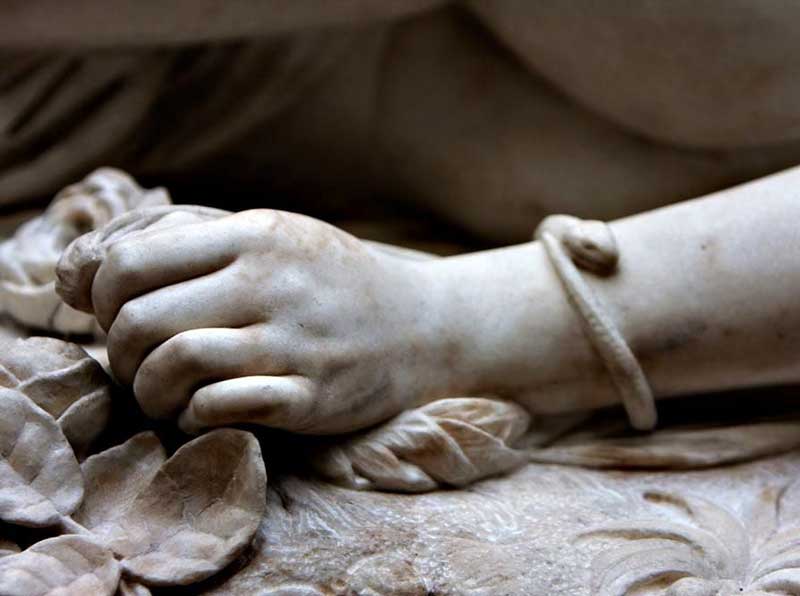
A statue titled ‘Woman Bitten by a Snake’, commissioned by the industrialist Alfred Mosselme and created by the French sculptor Auguste Clesinge, scandalized the public and the critics alike, when it was first exhibited in the Paris Salon in 1847. While everybody was struck by the unprecedented eroticism of the statue made by using a plaster cast of the voluptuous body of a naked woman, it made both the sculptor and the model famous.
In the controversial sculpture, Auguste Clésinger produced the suggestive image of a naked woman writhing from the agony and pain of a bite inflicted by the symbolic snake, twisted around her wrist. However, the dimpled flesh at the top of her thighs revealed, the artist used a plaster cast, moulded from the body of a model. The model was the famous French courtesan Apollonia Sabatier, who hosted a salon in Paris on Rue Frochot. She was one of the four women who inspired Charles Baudelaire’s famous work ‘Les Fleurs du Mal’ and was his lover from 1857 to 1862. By lending her body as a model to Clésinger the Parisian beauty brought him unhoped-for success.

It was argued that the indecency of the subject, a naked woman contorting on a bed of roses and a snake wrapped around her wrist, is enhanced by the exaggeratedly realistic treatment of the flesh, allegedly inspired by a famous demimondaine friend of the Romantic artists. In fact, the practice of moulding a sculpture directly from life was violently criticized in the 19th century, as it induced laziness and lack of integrity on the part of the artist.
Nevertheless, the generous curves of the young woman's opulent bosom, which offended the visitors to the Salon, along with her less expressive face and the ornate pedestal covered with flowers, successfully made Woman Bitten by a Snake a perfect example of eclecticism in sculpture.

The sculpture was originally called the ‘Dream of Love’, but the noise around it was so strong that later, a bronze snake was added to the marble figure and the name of the work was also changed. However, with the passing of time, while the bronze snake disappeared, the new name remained.
Woman Bitten by a Snake exerted a long lasting influence on the sculptors, who began making the female body more curvaceous and languishing, but omitted the cellulite rippling above the thighs of Apollonia Sabatier that had lent credence to the live-casting rumour. To give the lie to this accusation, by late 1847 Clésinger had sculpted Recumbent Bacchante, a slightly larger than life-size version of the Woman Bitten by a Snake, which was exhibited at the Salon of 1848.

Woman Bitten by a Snake, now in the Musee d'Orsay, created a deep impact because of its racy sensuality and a break from the classical tradition. The woman with a tiny snake on her other arm is said to be writhing from a snake bite, but a powerful spasm of happiness causes the young woman’s ample bosom to swell, giving prominence to her gleaming breasts. According to the critics, the picture clearly indicates that she was writhing from sexual pleasure and struggling hard to find ways to express that.
